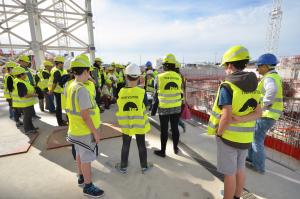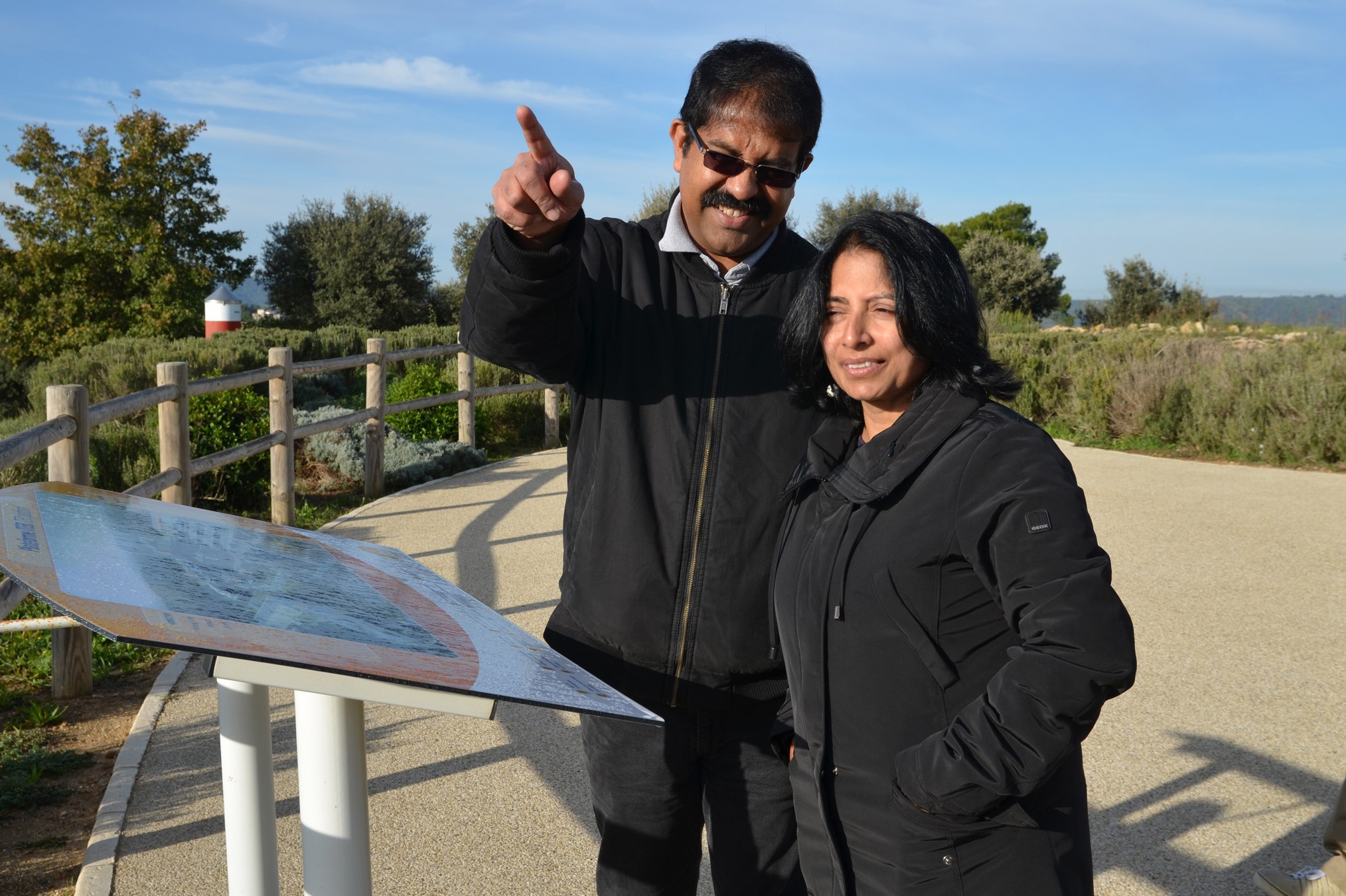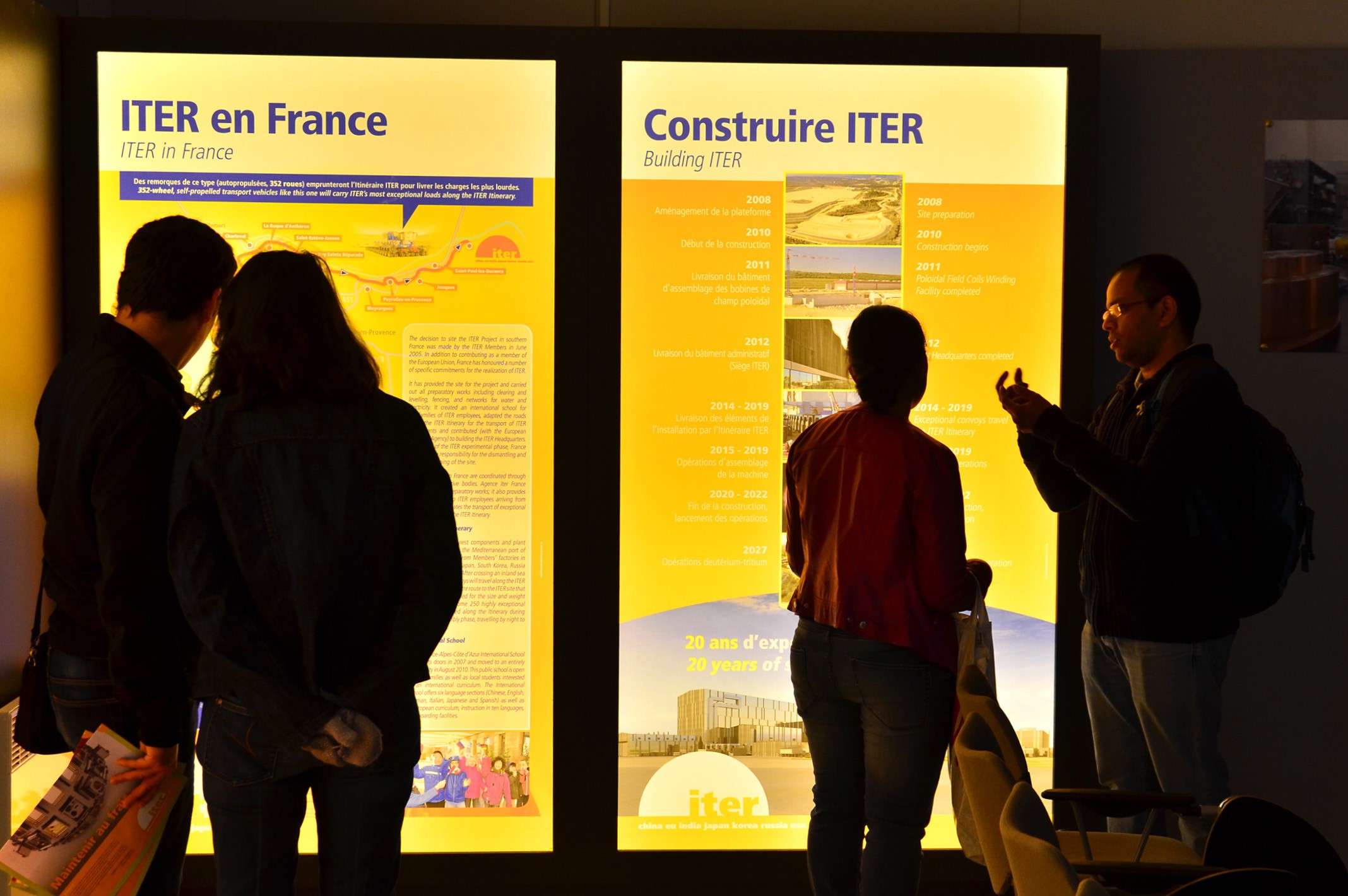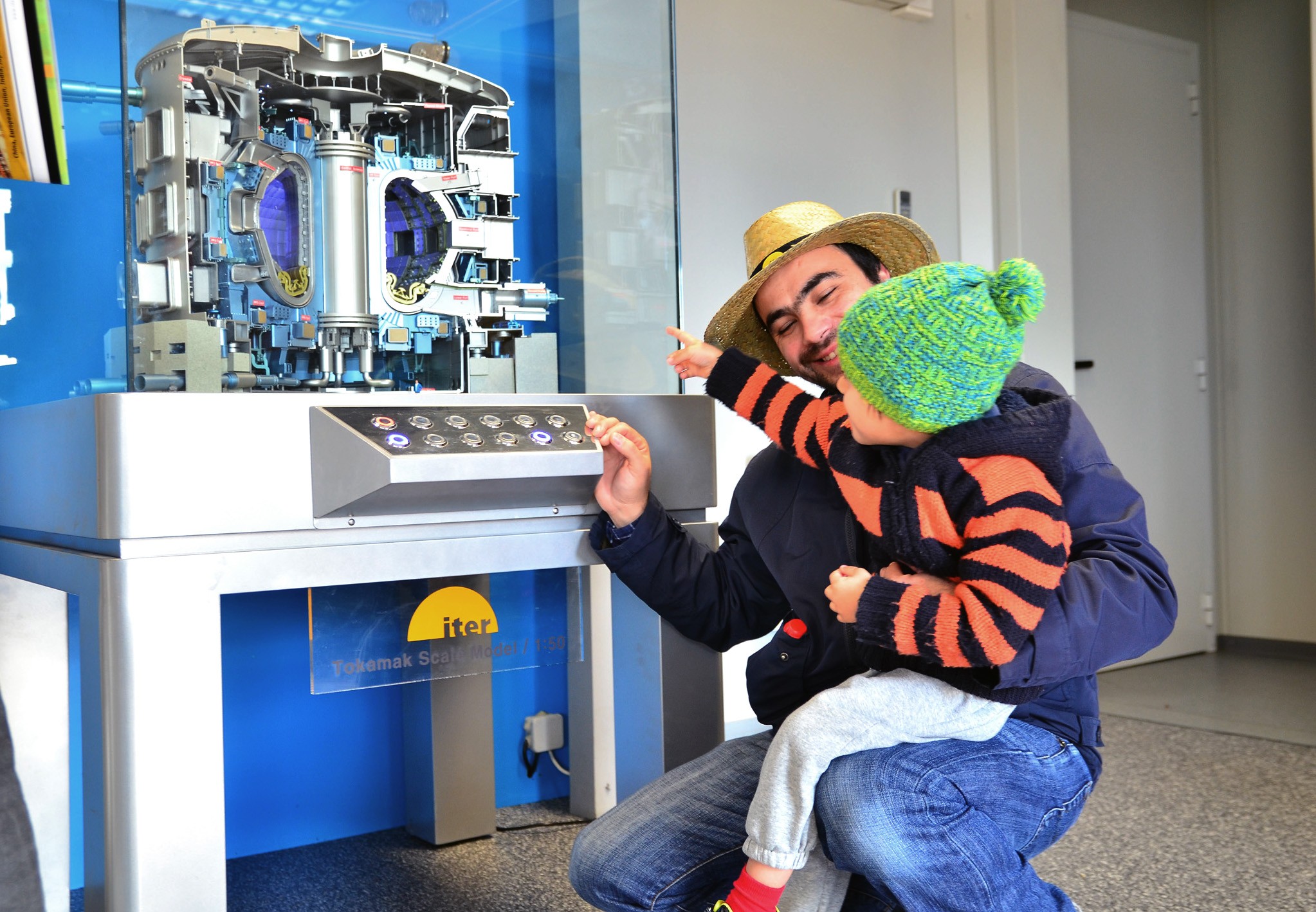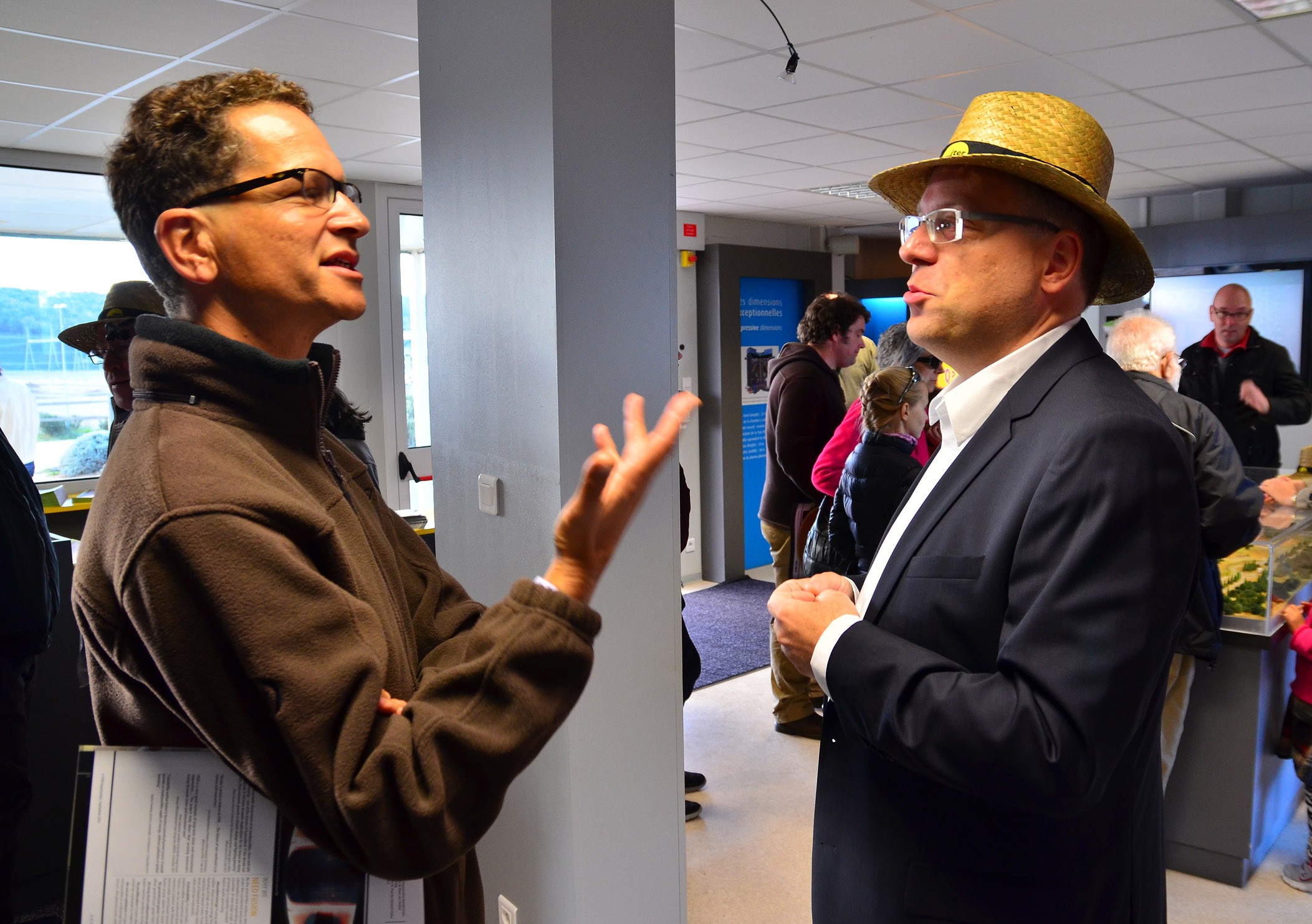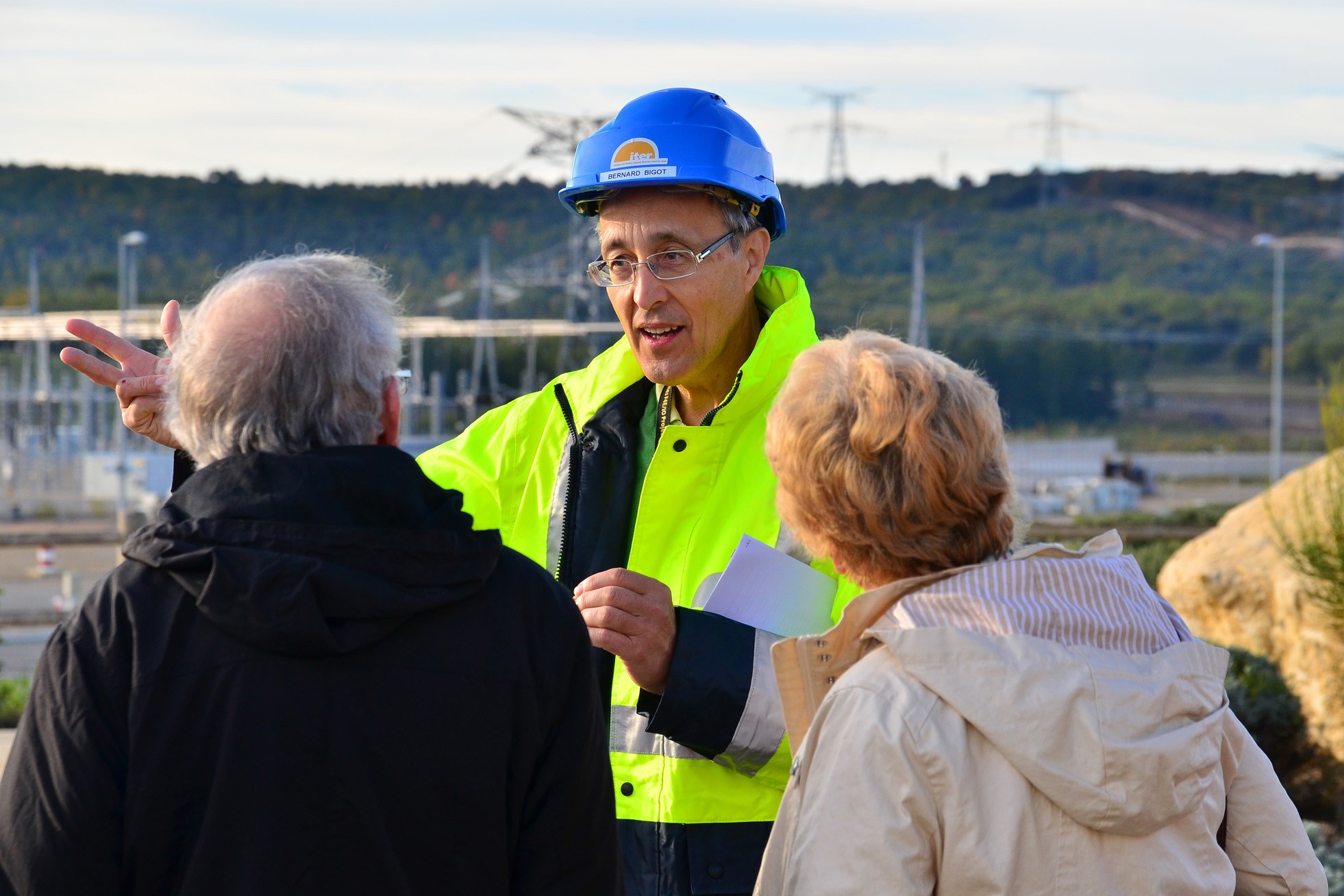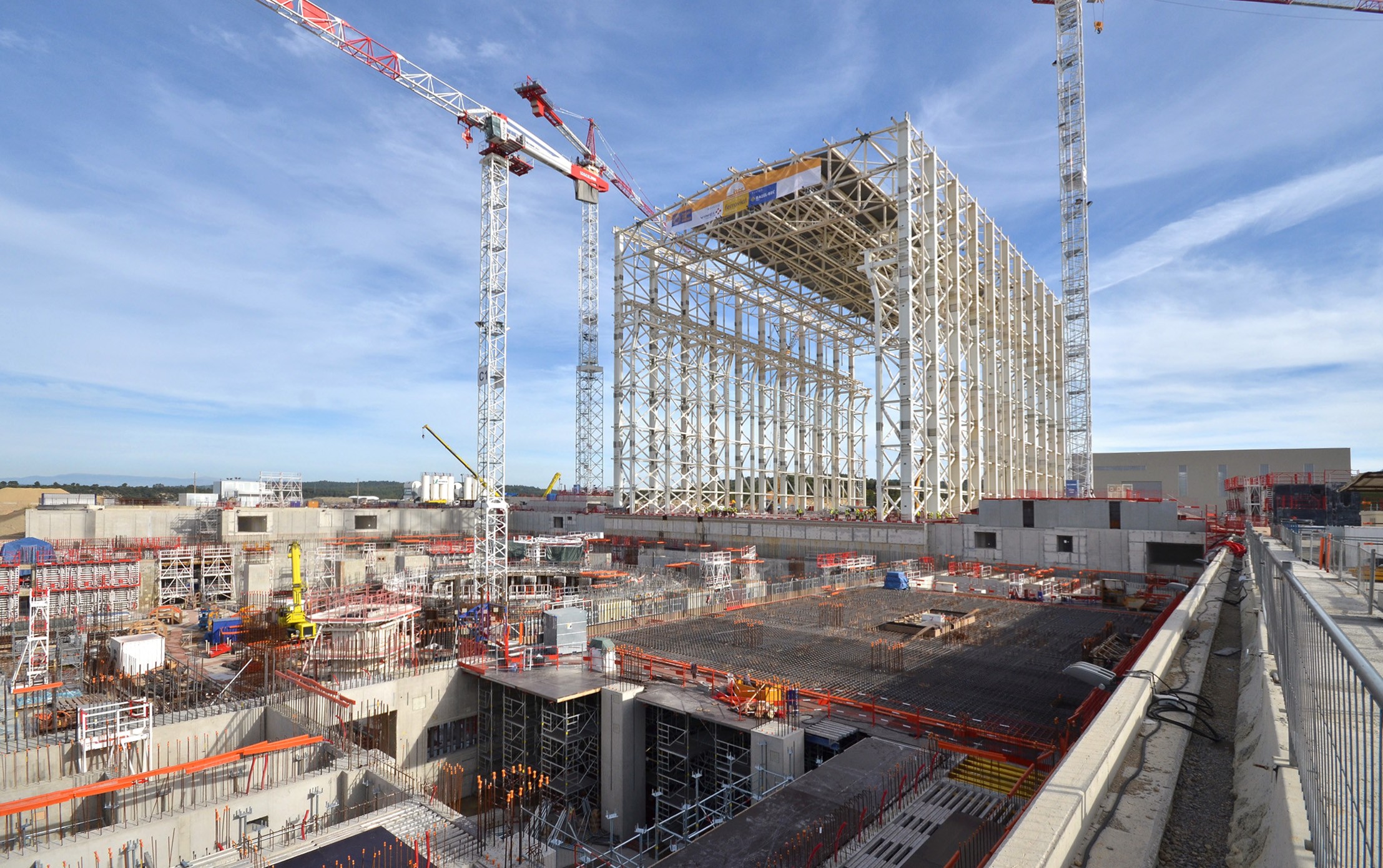A spectacular outing
Shuttle buses first dropped them off at the ITER Visitors Centre where they were welcomed by a team of volunteers from the scientific and technical departments and also by the Director-General of the ITER Project himself—Bernard Bigot—who spent the day on site speaking with the crowds and leading bus tours.
Through access to guides, films, documentation and mockups, the visitors were introduced to science and technology of ITER, the advantages of fusion, the hurdles that remain on the way to fusion energy, and the role of ITER. And then it was time to board the buses again to head to the centre of activity on the worksite.
For this edition of Open Doors Day, the public had the exceptional opportunity to gain access to the 60-metre-tall ITER Assembly Building (not yet completed) where the main components of the machine will be prepared and pre-assembled.
From this unique vantage point visitors had a stunning view down onto the Tokamak Pit, where work has just begun to pour the circular three-metre-thick bioshield. Representatives of the European Domestic Agency, in charge of supervising and financing all site work, were on hand with technical explanations.
Looking overhead to the roof of the Assembly Building, 60 metres above ground level, and then down again 12 metres into bottom of the Tokamak Pit, the visitors had an opportunity to experience the scale of ITER—the scale of the massive construction project, the scale of the machine to come—the largest tokamak in the world—and the scale of the international collaboration that is making it all happen.
The next Open Doors Day is planned for the spring of 2016.

